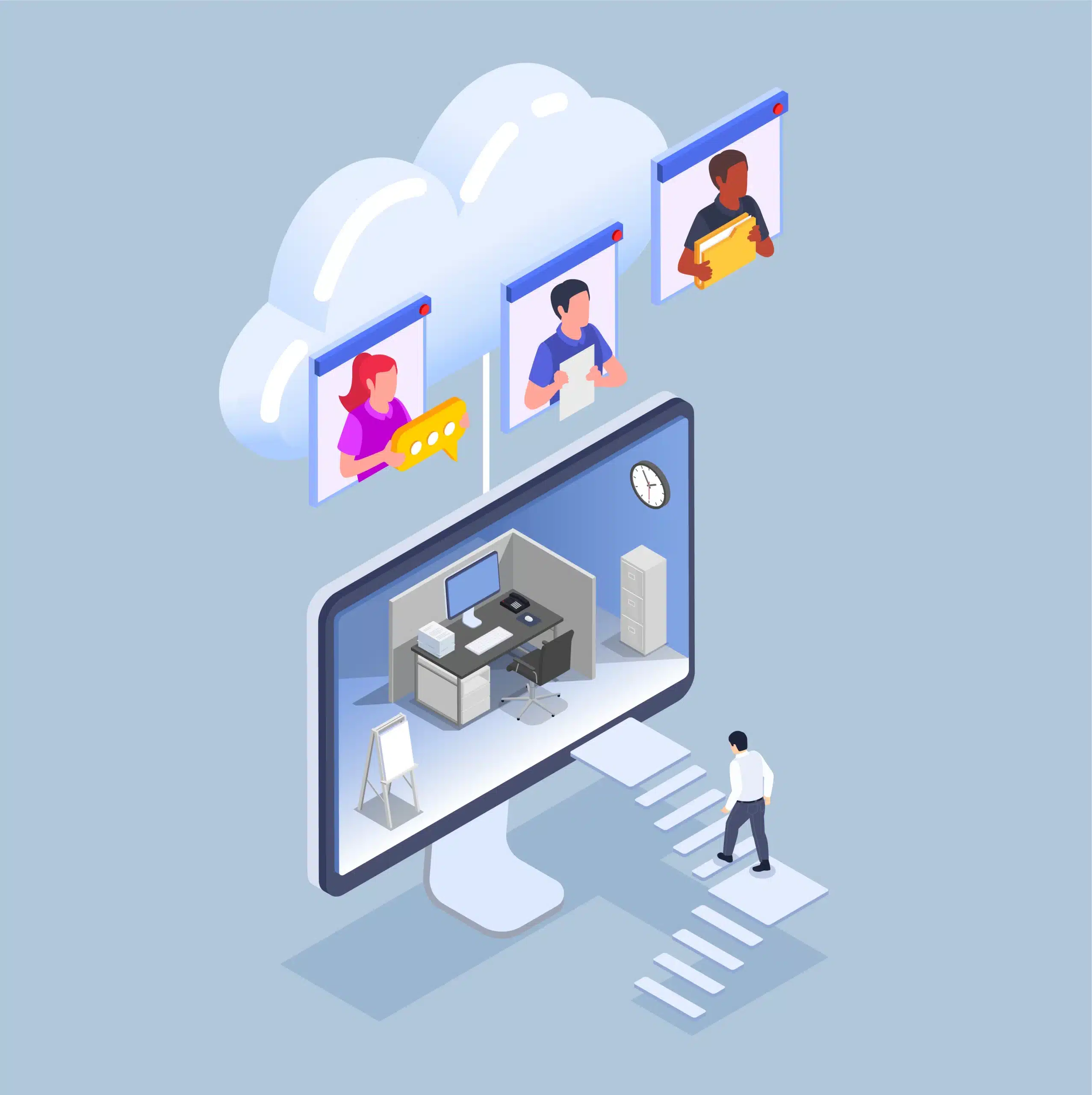Table of content
In a world where virtual interactions have become the new norm, remote onboarding challenges have taken center stage in the HR tech industry. As organizations adapt to the changing landscape, the need to address the unique hurdles posed by onboarding a candidate remotely has never been more critical. Navigating the challenges of remote onboarding requires a thoughtful approach that prioritizes the human aspect of the process.
In this blog, we’ll delve into the intricacies of remote onboarding challenges and provide practical solutions to ensure a smooth and engaging experience for both new hires and their employers. Let’s explore the evolving terrain of onboarding in our digital age, but before that let’s understand what exactly is remote onboarding?
What is Remote Onboarding?
Remote or virtual onboarding is the process of integrating new employees into a company and its culture when they are not physically present at the workplace. This approach has gained significant prominence in recent years, driven by the growing trend of remote work and the need to adapt to changing work environments, especially in light of the COVID-19 pandemic. It is a comprehensive process that ensures new hires feel connected, informed, and empowered to start their roles effectively, even when working from a different location.
The key components of onboarding a candidate remotely typically include:
Digital Orientation
New employees are provided with digital materials and resources that introduce them to the company’s mission, values, policies, and procedures. This can include video presentations, online handbooks, and e-learning modules.
Virtual Meet-and-Greets
To foster a sense of belonging and familiarity, remote onboarding often involves virtual introductions with team members, managers, and other key stakeholders through video calls or webinars.
Technology Setup
Ensuring that new hires have the necessary hardware, software, and access to company systems and tools to perform their job functions remotely.
Training and Development
Virtual onboarding may include online training sessions or courses to equip new employees with the skills and knowledge required for their roles.
Mentoring and Support
Assigning mentors or buddies to provide guidance and support to new employees during their initial weeks or months with the company.
Feedback and Evaluation
Regular check-ins and feedback sessions to assess the progress of the onboarding process and make necessary adjustments.
Remote onboarding is essential for enabling a smooth transition for new employees into a remote or hybrid work environment. It not only ensures that they are well-prepared to perform their job responsibilities but also that they feel connected to the company culture and are part of a larger team, despite physical separation. Effective virtual onboarding helps boost employee engagement, job satisfaction, and overall productivity, setting the stage for a successful and fulfilling remote work experience.
How is Remote Onboarding Different from On-Site Onboarding?
Remote and on-site (or in-person) onboarding are two distinct approaches to integrating new employees into an organization. The primary differences between the two lie in the methods, tools, and strategies used to accommodate the specific needs of each environment:
Physical Presence vs. Virtual Interaction
On-site onboarding requires employees to be physically present at the workplace. In contrast, virtual onboarding relies on virtual interaction through video calls, webinars, and digital tools, allowing new hires to join the company from anywhere.
Orientation Materials
On-site onboarding often involves printed materials, tours, and in-person presentations. Remote onboarding utilizes digital orientation materials such as video presentations, e-learning modules, and online handbooks accessible from anywhere with an internet connection.
Face-to-Face Interactions
On-site onboarding benefits from face-to-face interactions with colleagues, managers, and mentors. Remote or virtual onboarding substitutes these with virtual meet-and-greets, video conferences, and online chats, fostering connections in a virtual environment.
Hands-On Training
On-site onboarding may include hands-on training, shadowing, and in-person workshops. Remote onboarding relies on online training sessions, webinars, and video tutorials to equip new hires with the skills and knowledge they need.
Workspace Setup
For on-site onboarding, setting up physical workspaces is crucial. Remote onboarding ensures that new employees have the necessary technology, software, and access to company systems for remote work.
Mentoring and Support
On-site onboarding may offer immediate, in-person mentoring and support. In a remote setting, mentors or buddies provide guidance through virtual channels, offering help and advice online.
Feedback and Evaluation
Regular face-to-face check-ins are typical in on-site onboarding. On the other hand, onboarding remotely leverages virtual feedback sessions and assessments to monitor progress and make adjustments.
Both approaches have their advantages and challenges. On-site onboarding provides in-person connections and hands-on experiences, while onboarding a candidate on remote accommodates the flexibility of remote work and offers a scalable solution for a distributed workforce. The choice between them depends on the organization’s specific needs and its readiness to embrace remote work or a hybrid model.
Remote Onboarding Challenges and How to Overcome Them
Remote onboarding, while beneficial, comes with its unique set of challenges. It’s essential for organizations to address these challenges proactively to ensure a smooth and successful onboarding process. Here are five common remote onboarding challenges and their respective solutions:
Getting Set Up with Tech
Challenge
One of the biggest Remote onboarding challenges is, hires often have to set up their equipment and access essential systems on their own, which can be overwhelming and time-consuming.
Solution
- Ensure new employees have essential equipment before their start date. Expedite the process of shipping tech items, such as computers or phones, soon after the new hire accepts the offer.
- Send first-day calendar invites to the new hire’s personal email in advance. This enables them to prepare for the day when they need to access essential systems like email, messaging, and project management tools.
- Schedule an IT session on the first day to assist new hires in accessing crucial systems and troubleshooting any issues that may arise.
- Provide detailed written instructions for accessing tools, and creating a document they can refer to later if needed.
- Use a new hire preparation project to coordinate and track all necessary pre-work before onboarding begins, ensuring the employee has everything they need for a successful start.
Building Strong Culture and Relationships
Challenge
Another challenge for Remote onboarding is that team members often feel isolated, missing out on office interactions that build strong connections and company culture.
Solution
- Create connections before the first day by sending a welcome card, care package, or an email to express excitement about their joining.
- Schedule meet-and-greets to allow new hires to get to know their colleagues. Make it clear that these meetings are informal, fostering connections in a virtual environment.
- Schedule more frequent 1-1s during the first few weeks to answer questions and assess their adjustment.
- Assign a mentor to provide peer support and regular communication.
- Utilize virtual icebreakers and team-building games during meetings to encourage bonding and interaction among team members.
Navigating Virtual Communication
Challenge
New hires may struggle to navigate remote communication tools and may not know how to communicate effectively with their team.
Solution
- Be specific about how your team communicates and create detailed guidelines for remote communication. Share these guidelines with new hires during their first week.
- Create and share a communication plan for projects new hires will work on, outlining how to effectively communicate with team members and stakeholders.
- Set clear expectations for response times based on the role and communication tool being used.
- Utilize project management software to centralize collaboration and streamline communication.
Preventing Information Overload
Challenge
Remote hires can feel overwhelmed by the volume of new information they receive during onboarding.
Solution
- Schedule training sessions to review key information, with a focus on job-specific duties and team goals. Include breaks in longer sessions to combat video fatigue.
- Balance training sessions with unstructured time, allowing new hires to absorb and practice what they’ve learned.
- Consolidate information in one central location using a work management tool like Asana, making it easier for new hires to access and explore relevant resources.
- Create an onboarding checklist that breaks tasks down into manageable sections based on when they should be completed. Use a tool like Asana to link projects and contextual information to each task, providing all the necessary information in one place.
Assessing Progress and Engagement
Challenge
It can be challenging to monitor the progress and engagement of remote hires during onboarding.
Solution
- Use a combination of virtual check-ins and progress tracking tools to stay updated on the new hire’s progress and address any concerns or challenges promptly.
- Encourage open communication and provide a channel for new hires to voice their questions or concerns, ensuring they feel supported and engaged.
- Regularly seek feedback from new hires about their onboarding experience and make improvements based on their input.
By addressing these challenges with these solutions, organizations can facilitate a successful and productive remote onboarding process, ensuring that new hires feel welcome, informed, and prepared to contribute to the company’s success.
Conclusion
In conclusion, the challenges of remote onboarding are real, but with thoughtful planning and proactive strategies, organizations can overcome them effectively. From simplifying tech setup and fostering a sense of belonging to demystifying remote communication and preventing information overload, these challenges can be turned into opportunities for building a strong, remote workforce. As the world of work continues to evolve, remote onboarding is an essential component for ensuring that new hires feel empowered, connected, and ready to thrive in a virtual environment. By implementing the solutions mentioned, companies can unlock the full potential of their remote team members and set them on a path to success from day one.










